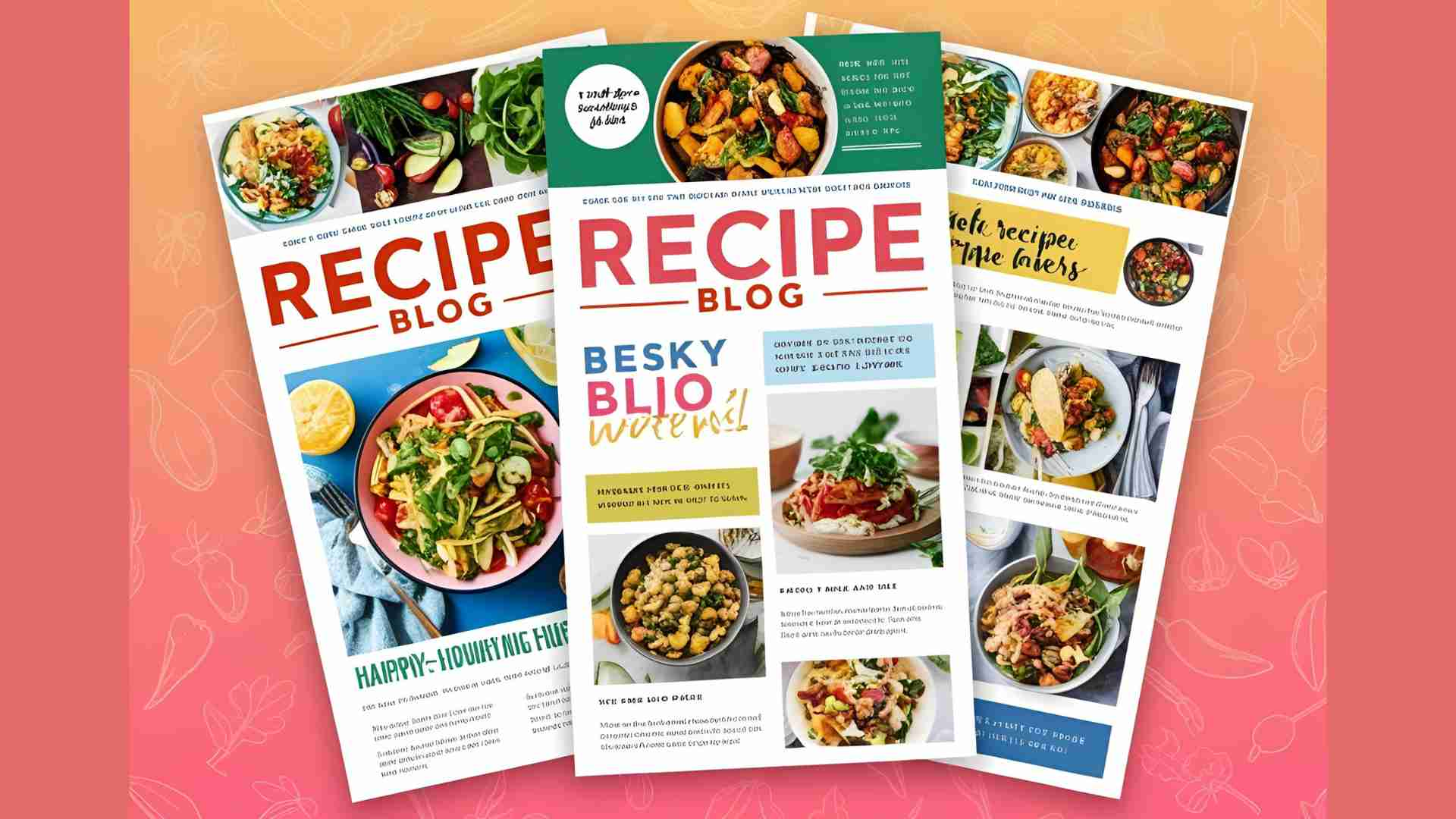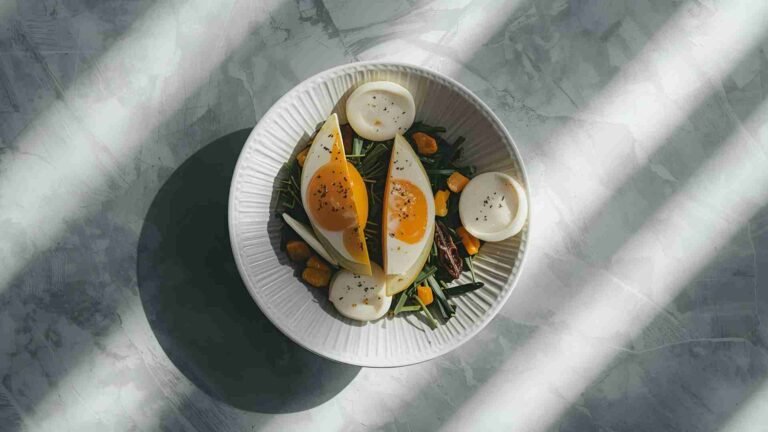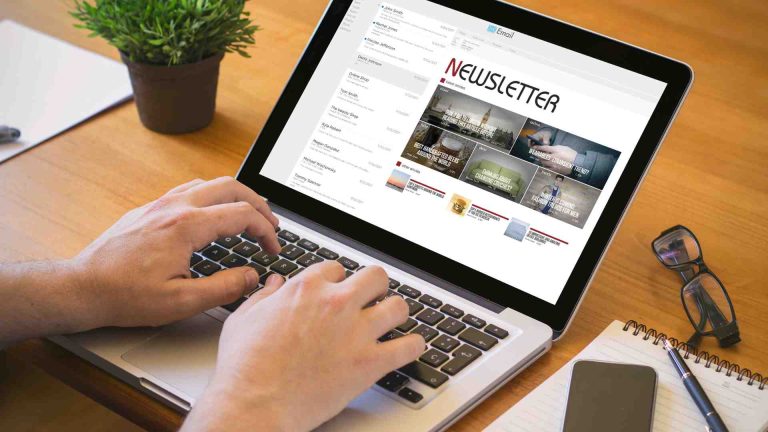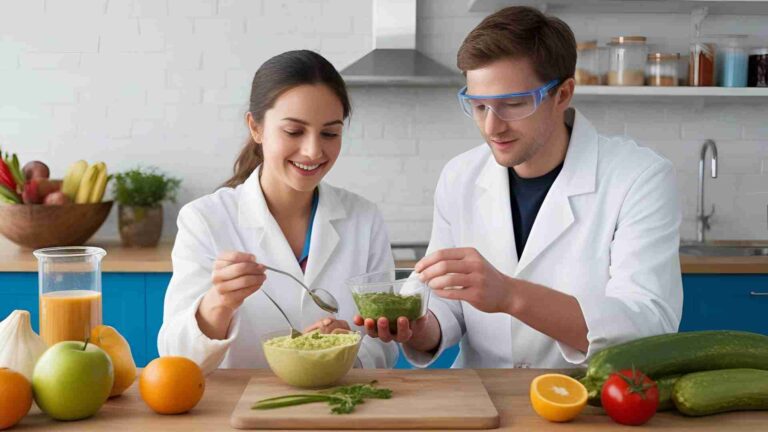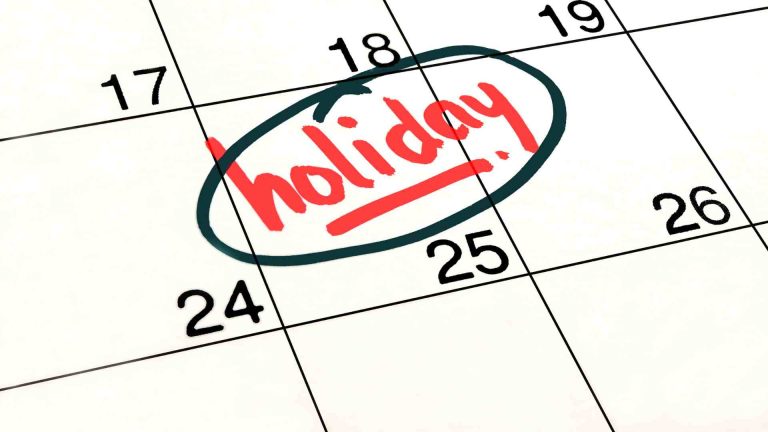Recipe Blog Newsletter Guide with Tips & Examples
Learn how to create a successful food blog newsletter with expert tips, strategies, and examples. Grow your audience and boost engagement with email marketing.
Email marketing is a powerful tool for food bloggers looking to build a loyal audience, drive website traffic, and diversify revenue streams. Unlike social media platforms, where algorithms can limit your reach, an email newsletter allows you to own your audience and communicate directly with them. This comprehensive guide explores how to set up, grow, and optimize a recipe blog newsletter, drawing on expert insights, practical strategies, and real-world examples. Whether you’re a beginner or a seasoned blogger, this guide will help you harness the potential of email marketing to elevate your food blog.
Why Email Marketing Matters for Food Bloggers
Email marketing offers food bloggers a unique opportunity to connect with their audience on a personal level, fostering loyalty and encouraging repeat visits. Here are the key reasons why email marketing is essential:
- Audience Ownership: Unlike social media followers, who are subject to platform policies and algorithm changes, an email list is an asset you fully control. If a platform like Instagram changes its algorithm or shuts down, you lose access to your followers. With an email list, you maintain direct access to your audience.
- Higher Engagement Rates: Email open rates often surpass social media engagement rates. According to HubSpot, 78% of marketers have seen increased email engagement, and 59% report email as their biggest source of ROI.
- Revenue Diversification: Email newsletters can drive traffic to your website, boosting ad revenue, affiliate sales, and brand partnerships. By sharing affiliate links or promoting sponsored content, you can create additional income streams.
- Building Community: Emails allow you to share your story, values, and personality, creating a stronger bond with your audience. This connection turns casual readers into loyal fans who return to your blog repeatedly.
Getting Started with Your Food Blog Newsletter
Setting up a newsletter may seem daunting, but modern email marketing platforms make it accessible for beginners. Here’s a step-by-step guide to get started:
1. Choose an Email Marketing Platform
Selecting the right platform is crucial for managing your newsletter effectively. Here are some popular options with their key features and pricing:
| Platform | Free Plan | Paid Plan | Key Features |
|---|---|---|---|
| Mailchimp | Up to 1,000 subscribers, 10,000 emails/month | Starts at $13/month for 500 subscribers | User-friendly, customizable templates, robust analytics, WordPress integration |
| ConvertKit | Up to 1,000 subscribers | Starts at $9/month for 300 subscribers | Automation, landing pages, designed for creators, easy-to-use interface |
| MailerLite | Up to 1,000 subscribers, 12,000 emails/month | Starts at $10/month for 1,000 subscribers | Affordable, advanced automation, pop-up forms, A/B testing |
| Flodesk | No free plan | $38/month (unlimited subscribers) | Visually appealing templates, flat pricing, ideal for design-focused bloggers |
Recommendation: For beginners, Mailchimp is a great choice due to its free plan and ease of use. ConvertKit is ideal for bloggers prioritizing automation and scalability.
2. Set Up Email Capture Forms
To grow your email list, you need to collect subscribers’ email addresses. Here are effective ways to integrate sign-up forms on your blog:
- Pop-Up Forms: Use timed or exit-intent pop-ups to capture emails without disrupting the user experience. For example, Lexi’s Clean Kitchen uses simple pop-ups offering a free recipe e-book to entice sign-ups.
- Sidebar Forms: Place a static sign-up form in your blog’s sidebar for constant visibility. Ensure the design is clean and aligns with your brand.
- In-Content Forms: Embed forms within recipe posts, such as a “Save this Recipe” option at the end of a recipe. This capitalizes on engaged readers who want more content.
- Post-Content Forms: Add a call-to-action (CTA) and form at the end of blog posts to encourage readers to subscribe after enjoying your content.
Tip: Offer a lead magnet—a free, valuable resource like a mini-cookbook or a printable meal plan—to incentivize sign-ups. Ensure the lead magnet aligns with your blog’s niche, such as “5 Quick Keto Dinner Recipes” for a low-carb blog.
3. Design Your Email Template
A well-designed email template enhances readability and engagement. Most platforms offer customizable templates, but here are key design tips:
- Keep It Simple: Use a clean layout with clear headings, concise text, and high-quality images of your recipes.
- Brand Consistency: Incorporate your blog’s colors, fonts, and logo to create a cohesive experience.
- Mobile Optimization: Ensure your template is responsive, as many subscribers read emails on mobile devices.
- Clear CTAs: Include prominent buttons like “Read the Recipe” or “Pin It” to drive action.
4. Create a Welcome Series
A welcome series is a sequence of automated emails sent to new subscribers to introduce your brand and build trust. Here’s a sample structure:
Email 1: Welcome and Introduction
- Share your story and what inspired your food blog.
- Highlight your most popular recipes with links.
- Example: The Lemon Bowl’s welcome email shares the blogger’s journey and links to top recipes.
Email 2: Deliver the Lead Magnet
- Provide the promised freebie (e.g., a recipe e-book) with a download link.
- Include a CTA to visit your blog or follow you on social media.
Email 3: Share Value
- Offer a quick tip, such as a kitchen substitution guide or a meal prep hack.
- Link to a relevant blog post to drive traffic.
Email 4: Engage with a Question
- Ask subscribers about their cooking preferences or challenges (e.g., “What’s your go-to weeknight meal?”).
- Encourage replies to foster two-way communication.
Chart: Welcome Series Flow

5. Set Up an RSS Feed (Optional)
For beginners, an RSS feed can automate email sending whenever you publish a new blog post. This is a low-effort way to start, but it’s less personal. To set up:
- In Mailchimp or ConvertKit, create an RSS campaign.
- Add code to pull the blog post title, excerpt, and image.
- Ensure the email links back to your website, not the full post, to drive traffic.
Tip: Transition to semi-automated or manual emails as you grow to add a personal touch.
Growing Your Email List
Building a substantial email list requires strategic efforts beyond website forms. Here are proven methods to attract subscribers:
1. Leverage Instagram for List Growth
Instagram is a powerful platform for food bloggers, but its volatility makes email list growth essential. Use these tactics:
- Comment for Recipe: Tools like Grocers List allow you to send automated DMs with recipe links when followers comment specific keywords (e.g., “getrecipe”). Include a sign-up link in the DM to capture emails.
- Link in Bio: Use a tool like Grocers List to create a landing page with recipes and an email sign-up form. Promote this link in your Instagram bio.
- CTA in Posts/Stories: Occasionally post about the value of your newsletter, like Caroline Chambers, who highlights exclusive recipes available to subscribers.
2. Create Compelling Lead Magnets
A lead magnet should be specific, valuable, and easy to consume. Examples include:
- Mini-Cookbook: “10 Easy Vegan Desserts” for a vegan blog.
- Checklist: “Pantry Staples for Quick Meals” with a printable version.
- Meal Plan: “7-Day Gluten-Free Meal Plan” for dietary-focused blogs.
Tip: Make the lead magnet downloadable and printable to enhance its perceived value.
3. Collaborate with Other Bloggers
Partner with bloggers in your niche to cross-promote newsletters. For example, mention a fellow blogger’s freebie in your newsletter and ask them to do the same. This exposes your brand to a new, relevant audience.
4. Use Content Upgrades
Offer bonus content related to a specific blog post, such as a printable recipe card or a shopping list, in exchange for an email address. For example, after a recipe for “Air Fryer Bacon,” offer a downloadable “5 Air Fryer Breakfast Recipes” guide.
Types of Emails to Send
Once your list is growing, the content you send determines engagement. Here are the most effective email types for food bloggers:
1. Weekly Newsletter
A weekly newsletter keeps subscribers engaged with fresh content. Structure it like this:
- Featured Recipe: Highlight 1–2 new recipes with vibrant images and brief descriptions.
- Meal Prep Ideas: Suggest a weekly meal plan using new and archived recipes.
- CTA: Include links to your blog, social media, or affiliate products.
Example: Lexi’s Clean Kitchen’s newsletter features a new recipe, a meal prep tip, and links to older posts, driving traffic to her site.
2. Recipe Roundups
Segment your list to send targeted emails based on interests:
- Themed Roundups: “Top 10 Pasta Dishes” or “Quick Weeknight Meals.”
- Seasonal Recipes: “Summer Grilling Favorites” or “Cozy Fall Soups.”
- Dietary Focus: “Gluten-Free Desserts” for specific audiences.
Example: Grilled Cheese Social’s roundup of “Easy and Cheesy Recipes” caters to busy subscribers.
3. “You Saved This Recipe” Emails
These emails send subscribers a recipe they’ve saved via an in-content form. Benefits include:
- For Subscribers: Easy access to recipes in their inbox.
- For Bloggers: Increased engagement and opportunities to suggest related content.
Example: Lexi’s Clean Kitchen sends personalized “Saved Recipe” emails with related recipe suggestions.
4. Promotional Emails
Use promotional emails sparingly to maintain trust. Examples include:
- Cookbook Launches: Announce your cookbook with visuals and a pre-order discount.
- Brand Partnerships: Share affiliate links for kitchen tools or ingredients you use.
- Press Features: Highlight media appearances with links to articles or videos.
Tip: Always provide value, such as a recipe using the promoted product, to avoid seeming salesy.
5. Community-Building Emails
Engage subscribers with non-recipe content to strengthen your connection:
- Behind-the-Scenes: Share a story about your latest recipe test or food adventure.
- Ask Questions: Invite feedback on cooking challenges or recipe preferences.
- Share Inspiration: Recommend books, podcasts, or other bloggers’ content.
Best Practices for Email Success
To maximize engagement and avoid unsubscribes, follow these best practices:
1. Craft Compelling Subject Lines
Subject lines determine whether your email gets opened. Tips include:
- Be Clear and Relevant: “5 Quick Dinner Recipes for Busy Nights” is better than “New Recipes!”
- Avoid Clickbait: Ensure the email content delivers on the subject line’s promise.
- Test Variations: Use A/B testing to find what resonates with your audience.
2. Respect Subscriber Time
Keep emails concise and scannable:
- Use short paragraphs and bullet points.
- Include 1–2 clear CTAs, like “Read the Recipe” or “Shop Now.”
- Avoid overwhelming subscribers with too many links or lengthy content.
3. Monitor Analytics
Track metrics like open rates (average 20–40%), click-through rates, and conversion rates (average 2.6%) using your platform’s analytics. Adjust your strategy based on what drives engagement.
4. Avoid Over-Promoting
Limit promotional emails to 1–2 per month to maintain trust. Balance them with valuable, non-salesy content like recipes or tips.
5. Set Clear Expectations
When promoting your newsletter, clearly state what subscribers will receive (e.g., “Weekly recipes and meal prep tips”). This reduces opt-outs and aligns expectations.
Common Mistakes to Avoid
- Infrequent Sending: Sending emails sporadically (e.g., once every few months) leads to low engagement and unsubscribes. Aim for at least one email every 1–2 weeks.
- Overly Salesy Content: Constantly promoting products erodes trust. Focus on providing value first.
- Ignoring Automation: Not using a welcome series or automated emails misses opportunities to engage new subscribers passively.
- Neglecting Copywriting: Generic or overly formal emails fail to connect. Write as if you’re talking to a friend, using a conversational tone.
Tools to Enhance Your Newsletter
Consider these tools to streamline your email marketing:
| Tool | Purpose | Cost |
|---|---|---|
| Canva | Create visually appealing email graphics | Free (Pro: $12.99/month) |
| Grocers List | Instagram-based email capture | Free (Premium plans vary) |
| Grammarly | Improve email copywriting | Free (Premium: $12/month) |
Monetizing Your Email List
Email marketing can significantly boost your blog’s revenue. Here’s how:
- Ad Revenue: Drive traffic to your blog with newsletter links, increasing page views and ad earnings.
- Affiliate Marketing: Share affiliate links for kitchen tools, ingredients, or services like grocery delivery (e.g., Thrive Market). Ensure compliance with affiliate program terms, as some (e.g., Amazon) prohibit email links.
- Brand Partnerships: A strong email list attracts sponsors. Offer to include brands in your newsletter as a bonus to partnerships.
- Products/Courses: Promote your own cookbooks, cooking classes, or e-books to subscribers.
Example: Liz Falcigno from The Clean Eating Couple uses her welcome series to include affiliate links, earning passive income while introducing new subscribers to her brand.
Case Study: Liz Falcigno’s Email Marketing Success
Liz Falcigno, founder of The Clean Eating Couple, transformed her blog from a hobby to a full-time business using email marketing. Starting with a simple RSS feed, she progressed to strategic emails, including a welcome series and weekly newsletters. Key results include:
- Increased Traffic: Emails guarantee page views for new recipes, boosting ad revenue.
- Affiliate Earnings: Her welcome series includes affiliate links, generating consistent income.
- Brand Appeal: Offering email blasts as a bonus to sponsors enhances partnership value.
- Resilience: During traffic downturns (e.g., the pandemic), affiliate-focused emails compensated for ad revenue losses.
Liz’s advice: “Start yesterday. Every day you’re not collecting emails is a missed opportunity.”
Conclusion
A well-executed email newsletter is a game-changer for food bloggers. By owning your audience, driving traffic, and diversifying revenue, email marketing helps you build a sustainable business. Start with a simple setup using platforms like Mailchimp or ConvertKit, grow your list with lead magnets and Instagram integration, and engage subscribers with valuable, personalized content. Avoid common pitfalls like infrequent sending or overly salesy emails, and use analytics to refine your strategy. With consistency and creativity, your newsletter can turn casual readers into loyal fans, ensuring your food blog thrives in a competitive digital landscape.
Call to Action: Ready to start your food blog newsletter? Sign up for a free Mailchimp or ConvertKit account, create a lead magnet, and launch your welcome series today. For advanced strategies, consider joining a coaching program like Liz Falcigno’s 5-Day Email List Challenge.
Please share these Recipe Blog Newsletter Guide with Tips & Examples with your friends and do a comment below about your feedback.
We will meet you on next article.
Until you can read, How To Get Rich Snippet Recipes on Google
